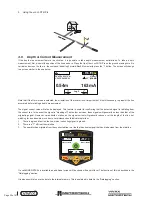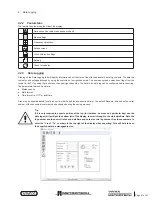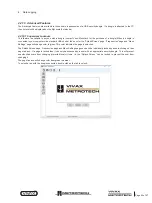
™
Page 31 of 67
3 Using the vLoc3 RTK-Pro
If the signal is not distorted, the position of the maximum signal will coincide with the position, as indicated by the arrows. If
these two positions do not agree, it may be because there is signal distortion. Treat the results with caution.
Continue to trace the line to its destination or source.
Note that if you have selected the “Omni Peak” antenna configuration, arrows will not appear either side of the compass. This is
because the line can be detected from any direction in the Omni mode.
3.5 Searching (sweeping) an Area in the Peak Mode
In any given area, it is likely that buried pipes and cables are not parallel to each other, frequently they will cross the area being
searched at a variety of different angles and depths. As the response of locator antennas is directional (using the traditional
screen), it is important to search the area in the same or similar pattern as below. This orients the antennas in a way that will
locate any signals being radiate from the buried line. Once a response is found, then trace and pinpoint the line and mark.
Searching an area in this way is generally (but not exclusively) done in the “Peak” mode using passive locating.
3.6 Searching (sweeping) an Area in the Omni Peak Mode
Searching an area with Omni antennas is very similar to the above except that it is only necessary to sweep an area in one
direction. That is to say, a zig-zag motion is enough rather than a full grid action. This is because the locator will respond to a
signal from a line in any direction. It has the benefit of cutting the sweep time in half.
3.7 Tracing a Buried Line
Where possible, trace out from the transmitter connection point. Having “pinpointed” the line, hold the locator vertically and
in front of you with the compass line indicator pointing forward/back. Start by moving the locator left to right/right to left over
the line. Keep the movement over the center of the line i.e. the largest meter response, adjusting the gain when necessary.
Whenever practical, it should be traced to the point that provides additional confirmation of what type of service is being located
(i.e., a telephone pedestal, a manhole cover etc.).
















































